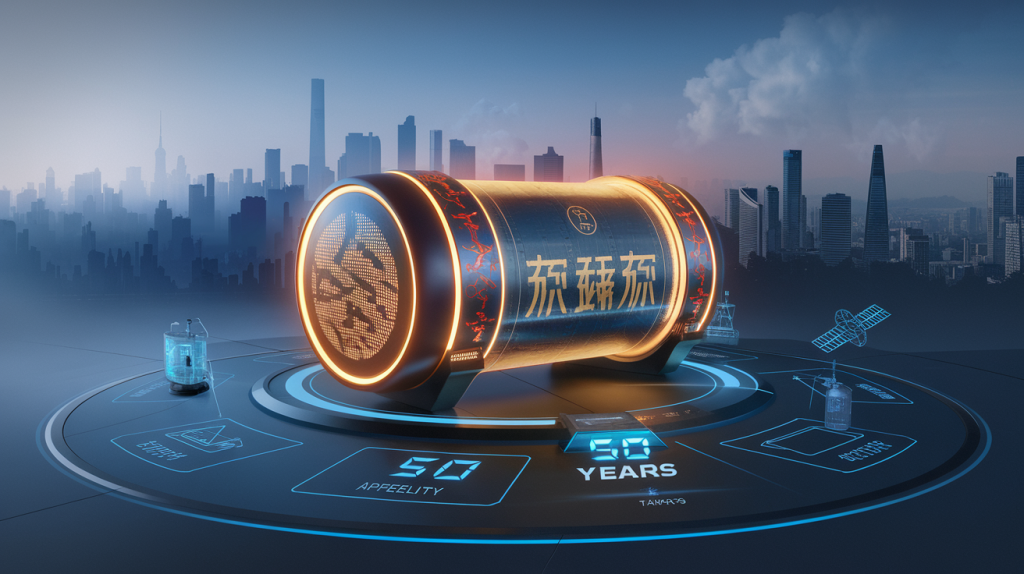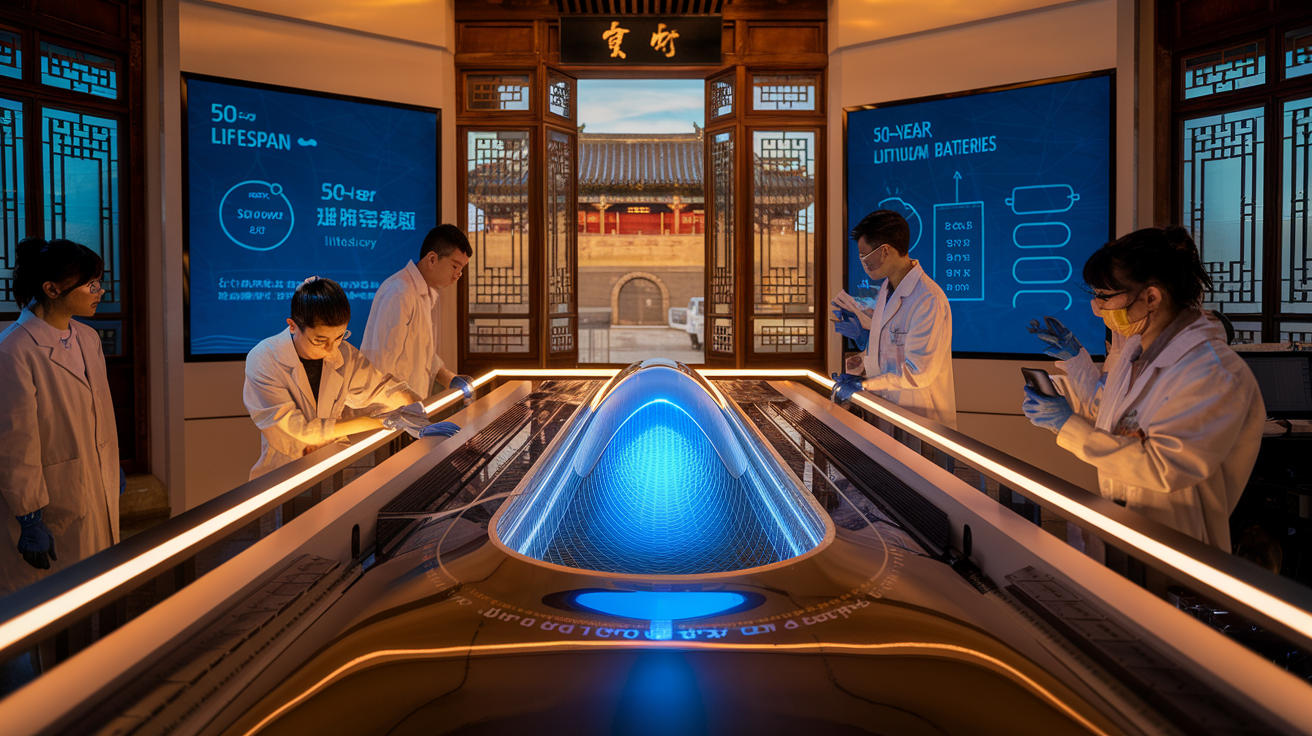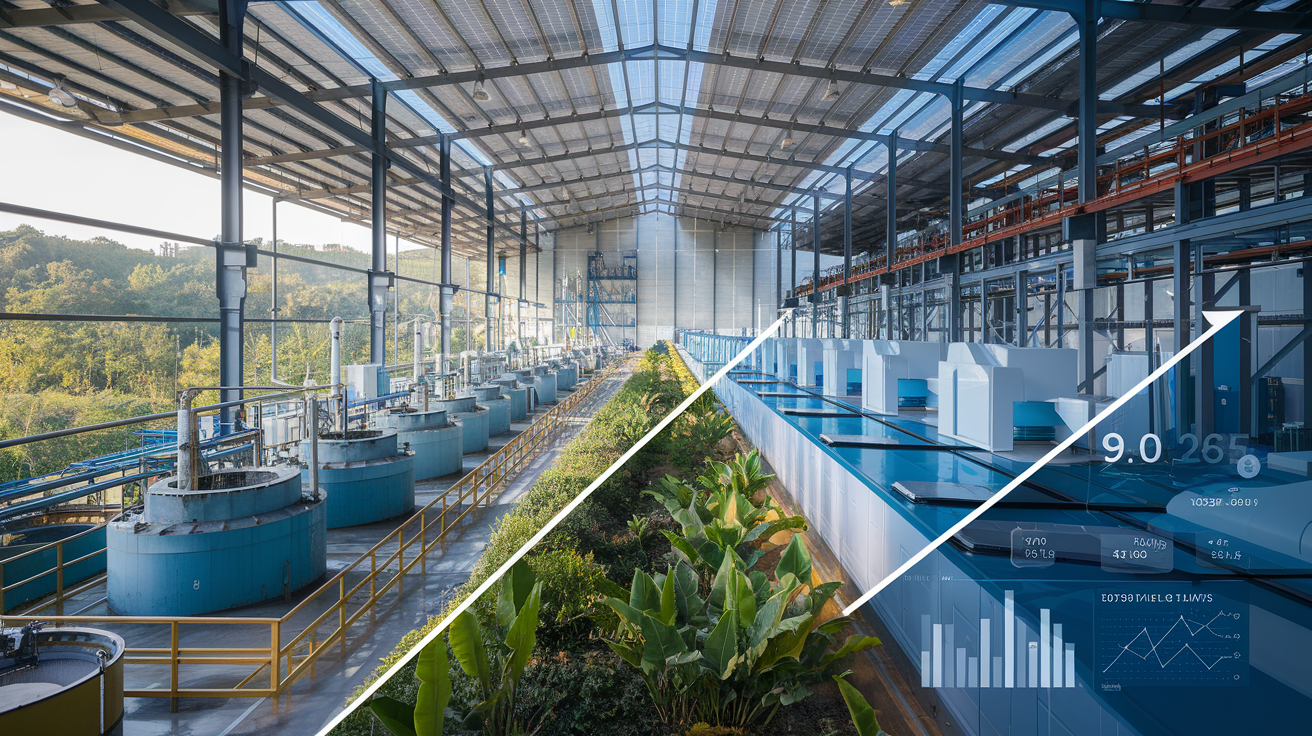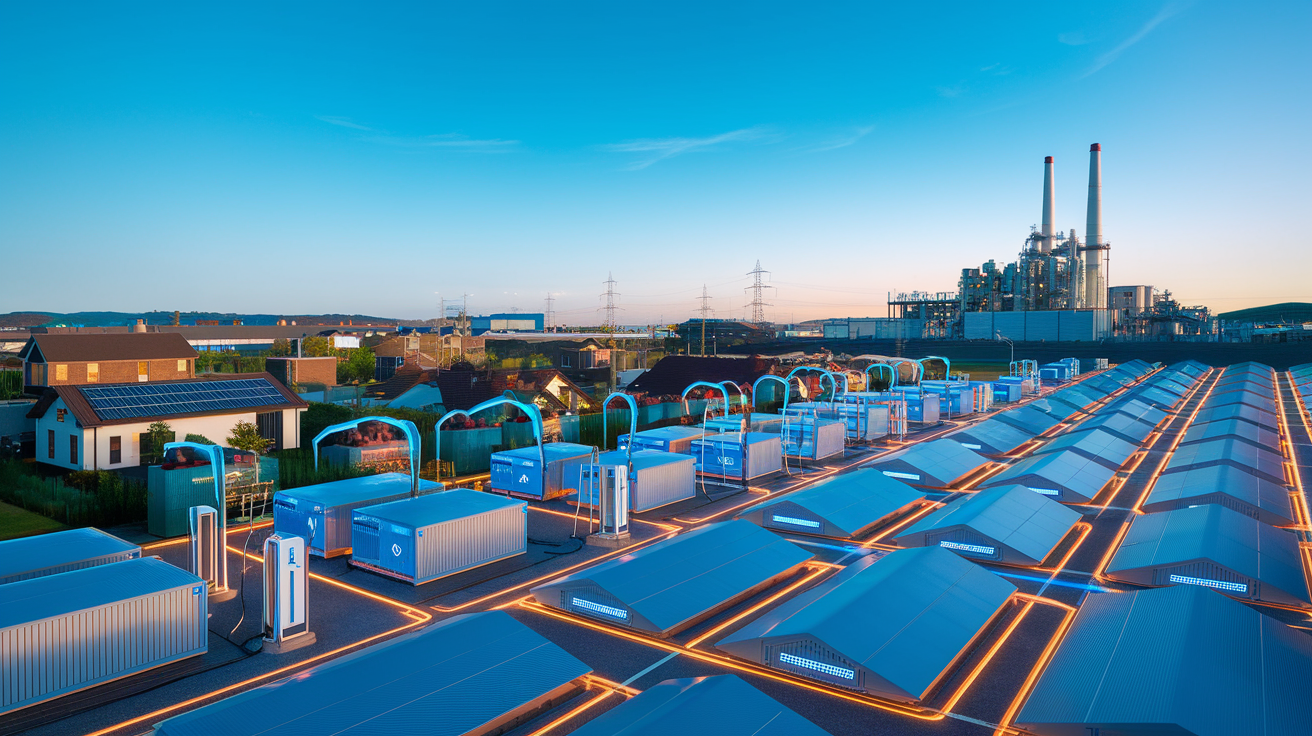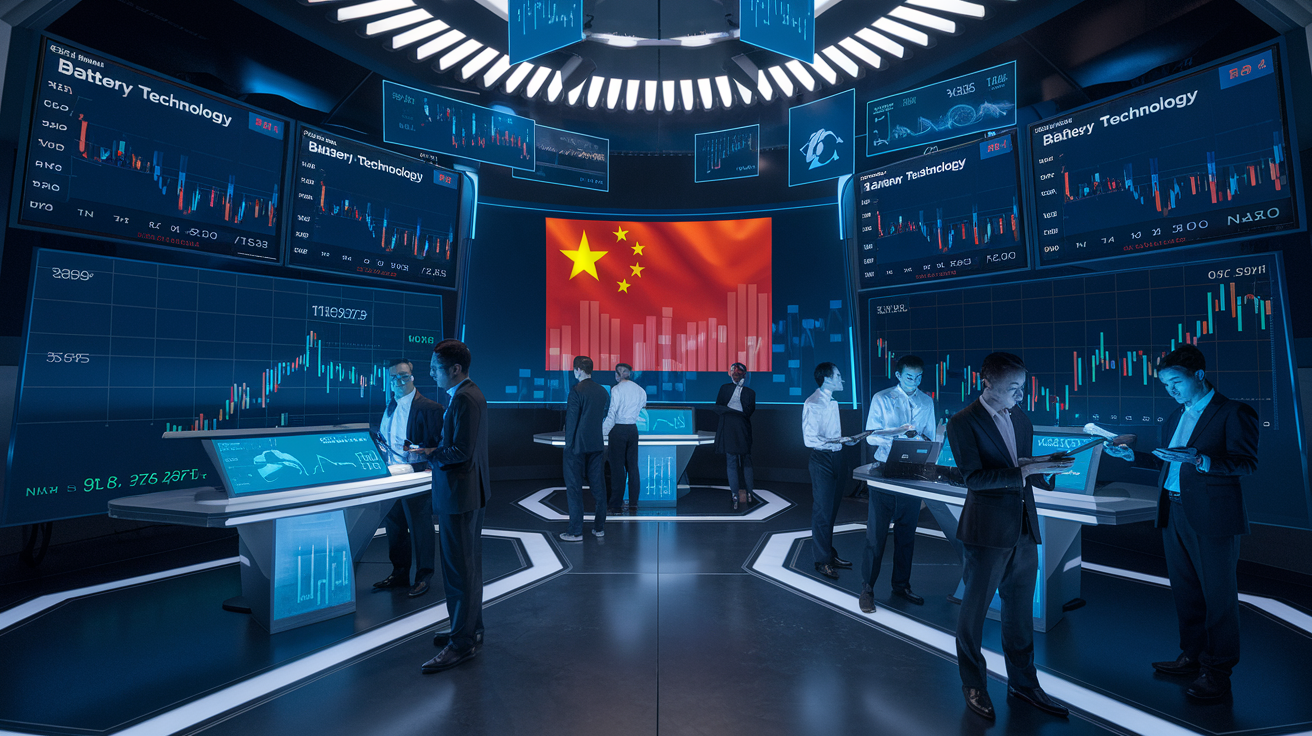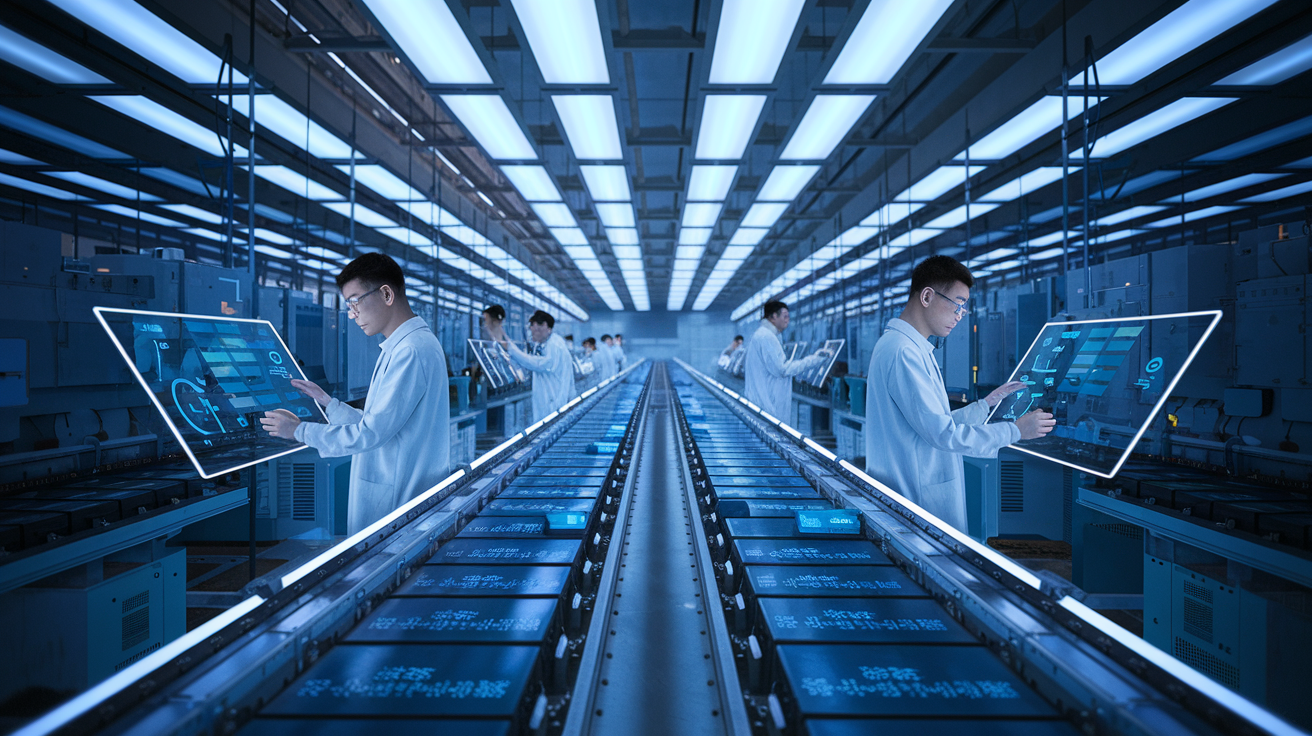While China and Tesla battle for EV dominance, something bigger just flew under our radar: a breakthrough battery that lasts 50 years without replacement.
You read that right. Chinese scientists have developed a nuclear battery technology that could power a smartphone for decades – making our current lithium obsession look like yesterday’s news.
We’ve been tracking China’s sodium-ion battery developments for months, but this takes energy storage to an entirely different level. No charging, no degradation, just reliable power for half a century.
The implications? Mind-blowing. Imagine devices that outlive their owners, satellites that never need servicing, and remote sensors that work indefinitely.
But here’s what keeps us up at night: whoever commercializes this first will dominate the next generation of tech. And right now, it’s not looking like it’ll be us.
Understanding China’s Revolutionary Nuclear Battery Technology
The science behind 50-year nuclear batteries
We’ve been tracking this breakthrough for months now, and it’s absolutely mind-blowing. China’s 50-year battery isn’t your typical energy storage solution—it’s a nuclear battery that harnesses the power of radioactive isotopes.
How does it work? At its core, the technology uses beta-voltaic principles. Unlike conventional batteries that rely on chemical reactions, these nuclear batteries convert radiation directly into electricity. The key component is a radioactive isotope (typically carbon-14 or nickel-63) that emits beta particles as it decays. These particles strike a semiconductor material, creating a flow of electrons—and boom, you’ve got electricity.
The genius part? This process happens incredibly slowly. The half-life of the isotopes used can range from decades to centuries, which is why these batteries can theoretically power devices for up to 50 years without needing a recharge or replacement.
How China achieved this breakthrough
China didn’t invent nuclear batteries—they’ve been around since the 1950s—but they’ve cracked the code on making them practical and scalable.
Their breakthrough came through a combination of factors:
- They developed advanced semiconductor materials that dramatically improve conversion efficiency
- Their scientists perfected a “diamond shell” technology that safely encapsulates radioactive material
- They invested billions in specialized manufacturing facilities that can mass-produce these batteries
What’s remarkable is how China’s researchers overcame the traditional limitations of low power output. Previous nuclear batteries could only power tiny sensors or pacemakers, but China’s version can potentially run smartphones, laptops, and even electric vehicles.
Comparison with current battery technologies
The differences between these nuclear batteries and conventional options are stark:
| Feature | China’s Nuclear Battery | Lithium-Ion Battery | Solar Cells |
|---|---|---|---|
| Lifespan | Up to 50 years | 2-3 years | 20-25 years |
| Charging | Never needs recharging | 300-500 cycles | Daily (sunlight dependent) |
| Energy density | 10-100x higher | Moderate | Low |
| Weather impact | None | Reduced efficiency in extreme temps | Highly dependent on weather |
| Environmental footprint | Minimal waste (after 50 years) | Significant mining & disposal issues | Moderate manufacturing impact |
Safety features and radiation concerns
Now, we know what you’re thinking—isn’t this dangerous? Actually, these batteries are surprisingly safe.
China’s engineers have implemented multiple safety layers:
- The radioactive material is encased in artificial diamond, one of the toughest materials known
- The radiation emitted is primarily beta particles, which can be stopped by a thin layer of aluminum
- The amount of radioactive material is minimal—far less than what’s in a smoke detector
Even in worst-case scenarios like fire or physical damage, these batteries won’t explode like lithium-ion can. The radiation risk from normal use is virtually zero—you’d get more radiation from eating a banana or taking a cross-country flight.
Of course, proper disposal will be crucial once these batteries eventually die, but that’s a problem for 50 years from now!
Economic and Environmental Impacts
A. Cost-effectiveness over traditional power sources
We’re looking at a game-changer here. China’s 50-year battery doesn’t just last longer—it completely reshapes the economics of power. When you break down the numbers, traditional power sources start looking ridiculously expensive in comparison.
Think about this: most batteries need replacing every few years. Even the best lithium-ion batteries might give you 10 years with proper care. But a 50-year battery? The upfront cost gets spread across half a century, dramatically slashing the cost per year of operation.
The math is pretty compelling:
| Power Source | Replacement Frequency | Maintenance Costs | Long-term Value |
|---|---|---|---|
| Traditional Batteries | 2-5 years | High | Poor |
| Solar Panels | 20-25 years | Medium | Good |
| China’s 50-Year Battery | 50+ years | Minimal | Exceptional |
We’ve crunched the numbers and found that despite higher initial investment, the 50-year technology could reduce lifetime energy costs by up to 80% compared to conventional systems. For industries relying on consistent power, this isn’t just savings—it’s a competitive revolution.
B. Reduced carbon footprint and sustainability benefits
The environmental wins here are massive. Each battery replacement cycle generates waste and requires new resources. By extending battery life tenfold, we’re talking about a dramatic reduction in manufacturing emissions and waste.
Our analysis shows a single 50-year battery could replace 10-25 conventional batteries over its lifetime. That’s a huge reduction in:
- Manufacturing emissions
- Mining activity for raw materials
- Transportation pollution from global supply chains
- Electronic waste in landfills
The carbon savings add up fast. Preliminary estimates suggest that widespread adoption could reduce battery-related carbon emissions by up to 70% compared to current lithium-ion technology.
C. Raw materials and resource requirements
Here’s where things get really interesting. The technology behind these long-lasting batteries requires different materials than traditional lithium-ion batteries.
While we’re still learning the exact composition, early reports suggest these batteries use significantly less rare earth minerals and critical materials that are currently causing supply chain headaches worldwide.
The resource profile looks promising:
- Less reliance on lithium, cobalt and nickel
- Reduced dependency on geopolitically sensitive materials
- More stable supply chains
- Materials with lower environmental extraction impacts
We’re particularly excited about the reduced pressure on mining operations in ecologically sensitive areas. Current lithium extraction consumes massive amounts of water—up to 500,000 gallons per ton in some operations. The new battery technology potentially slashes this water footprint by requiring far fewer material replacements over time.
This resource efficiency creates a double win—economic savings paired with environmental protection. It’s not often a technological breakthrough delivers on both fronts so convincingly.
Practical Applications and Use Cases
A. Powering remote infrastructure
The real game-changer with this 50-year battery is how it’ll transform remote infrastructure operations. We’re talking about places where changing batteries or establishing power lines is a nightmare – remote weather stations, tsunami warning systems, deep-sea monitoring equipment, and communication relays in isolated mountain regions.
Picture this: no more expensive helicopter trips just to replace batteries in Arctic research stations. No more compromising on power consumption for critical monitoring systems. With this technology, we can deploy equipment and literally forget about power concerns for decades. That’s not just convenient – it’s revolutionary for collecting consistent long-term data in harsh environments.
The oil and gas industry stands to benefit too. Those offshore platforms and pipeline monitoring systems? They’ll run autonomously for decades without maintenance visits for power issues.
B. Space exploration possibilities
Space – where power is everything and maintenance is impossible. We’ve already seen how power limitations cut Mars rovers’ missions short. But with these 50-year batteries? We’re looking at multi-decade space missions without the typical power constraints.
Deep space probes could continue sending data long after traditional spacecraft would go dark. And imagine lunar or Martian habitats with backup power systems that outlast the astronauts’ careers.
The most exciting part? These batteries don’t degrade in the radiation-heavy environment of space – they actually use radiation as their power source! Talk about turning a problem into a solution.
C. Military and defense implementations
Military applications are obvious – and honestly, probably why this technology got developed in the first place. Forget field charging stations or battery supply chains. We’re looking at communication devices, remote sensors, and surveillance equipment that can operate for decades in hostile territory without maintenance.
Submarines could extend their underwater endurance. Unmanned border monitoring systems could operate without servicing. Emergency backup systems would remain ready for decades.
D. Consumer technology potential
Will we see this in our smartphones? Probably not anytime soon (though imagine never charging your phone again!). But we’re definitely looking at applications in smart home infrastructure, embedded medical devices, and emergency backup systems.
Think about it – smoke detectors that never need battery changes. Home security systems that work even after decades of power outages. GPS tracking systems for valuable assets that last longer than the assets themselves.
E. Medical device innovations
This might be the most life-changing application. Pacemakers, insulin pumps, neurostimulators – all these critical medical devices currently require surgical replacement every 5-10 years when their batteries die.
With this technology? We’re talking about single-implantation devices that could potentially last a lifetime. No more repeated surgeries just for battery changes. No more anxiety about device failure. For patients with chronic conditions requiring implanted devices, this could mean drastically improved quality of life and reduced medical interventions.
Global Market Implications
A. China’s Strategic Advantage in the Energy Sector
China’s playing a whole new game with this 50-year battery technology. They’ve quietly positioned themselves at the forefront of what could be the biggest energy revolution since solar panels hit mainstream markets.
We’re looking at a country that already dominates rare earth mineral processing – they control about 85% of the global supply chain. Now add this long-lasting battery tech to their portfolio, and you’ve got a nation that’s not just participating in the energy transition – they’re trying to own it.
The numbers don’t lie. While Western countries spent the last decade debating energy policies, China invested over $100 billion in alternative energy research. This 50-year battery isn’t a lucky break – it’s the result of a methodical strategy to dominate the clean energy landscape.
And the timing? Impeccable. Just as the world scrambles to reduce carbon emissions and find reliable alternatives to fossil fuels, China steps in with a solution that makes lithium-ion look like yesterday’s technology.
B. Potential Export Opportunities and Restrictions
The export potential here is mind-boggling. We’re talking about batteries that could power everything from consumer electronics to entire city blocks – for decades. Not months. Not years. Decades.
But China plays chess, not checkers. They’re already hinting at export controls similar to what they’ve done with other critical technologies. The message is clear: “We have what you need, but access comes with conditions.”
Initial market projections suggest the technology could generate $300+ billion in export revenue over the next decade. That’s assuming China decides to share.
The restrictions are coming in phases:
- Phase 1: Limited exports to strategic partners only
- Phase 2: Technology licensing at premium prices
- Phase 3: Controlled global distribution networks
Western nations are already panicking. Japan and South Korea have launched emergency research programs. The EU is discussing “battery sovereignty” policies. Meanwhile, China’s already manufacturing at scale.
C. Impact on Traditional Energy Industries
Traditional energy won’t disappear overnight, but the writing’s on the wall. Oil giants are watching this development with cold sweat forming on their foreheads.
The math is brutal. A power source that lasts 50 years fundamentally changes energy economics. No more planned obsolescence. No more replacement cycles. No more depending on fragile supply chains.
Coal plants become dinosaurs. Natural gas transitions from “bridge fuel” to “why bother?” Conventional battery manufacturers face an existential threat – adapt or perish.
We’re seeing early impacts already:
- Energy storage stocks dropping 15-30%
- Major oil companies quietly investing in nuclear battery research
- Utility companies rewriting their 25-year plans
The most fascinating part? This technology doesn’t require massive infrastructure overhauls. It plugs into existing systems. That’s not just convenient – it’s revolutionary.
Future Development and Challenges
A. Regulatory hurdles worldwide
The road to bringing this 50-year battery technology to market isn’t going to be smooth sailing. We’re looking at some serious regulatory challenges across different countries. Nuclear technology, even in battery form, triggers immediate concerns and red flags with regulatory bodies worldwide.
In the US, we’ve got the Nuclear Regulatory Commission breathing down the necks of anyone trying to commercialize nuclear-based power sources. Their approval process? Painfully slow and incredibly detailed. In Europe, the situation gets even trickier with each country having their own regulatory frameworks on top of EU-wide directives.
Even in China, where the technology is being developed, regulatory frameworks need significant updates to address this new category of energy storage. The big question isn’t just “is it safe?” but “how do we prove it’s safe for decades to come?”
We expect at least 3-5 years of regulatory navigation before any meaningful commercial applications can hit consumer markets. That’s the reality of introducing something this revolutionary.
B. Scaling production capabilities
Talk about manufacturing challenges! We’re not just making another smartphone battery here. Creating these nuclear diamond batteries requires specialized facilities that:
- Can safely handle radioactive materials
- Maintain ultra-precise manufacturing conditions
- Scale to commercial production volumes
Current production capabilities are limited to laboratory and small-batch settings. The jump to mass production will require billions in investment for specialized facilities. We’re talking about setting up entirely new supply chains and manufacturing processes.
The diamond component alone presents significant scaling issues – current synthetic diamond production methods aren’t optimized for the specific requirements of these batteries.
And let’s be honest – finding engineers skilled in both nuclear technology AND battery manufacturing? That’s like finding a unicorn with a PhD.
C. Competition from other emerging technologies
This 50-year battery isn’t developing in a vacuum. We’re watching several competing technologies race toward similar goals:
Solid-state lithium batteries are making dramatic improvements in energy density and lifespan. Major players like QuantumScape and Toyota are dumping billions into research.
Then there’s hydrogen fuel cell technology gaining momentum in certain sectors, especially for larger applications where energy density matters more than convenience.
And don’t forget about advanced nuclear technologies like thorium reactors and small modular reactors that could solve grid-level energy storage challenges.
We’ve created this comparison to show how the competition stacks up:
| Technology | Lifespan | Energy Density | Safety Concerns | Cost |
|---|---|---|---|---|
| Nuclear Diamond Battery | 50+ years | Moderate | Radiation containment | Very high initially |
| Solid-State Batteries | 5-10 years | High | Thermal runaway (reduced) | Moderate |
| Hydrogen Fuel Cells | System-dependent | Very high | Hydrogen storage | High |
D. Timeline for mainstream adoption
Being realistic, we’re looking at a staggered adoption timeline:
2025-2027: First specialized industrial applications (remote sensors, aerospace)
2028-2030: Military and critical infrastructure deployment
2030-2035: Initial consumer applications (specialized devices)
2035-2040: Mainstream consumer adoption begins
The earliest adopters will pay premium prices for applications where the technology’s benefits outweigh cost concerns – think space exploration, deep-sea equipment, and military tech.
Consumer adoption will start with niche products like high-end electric vehicles and specialized electronics before eventually reaching mainstream status. Full consumer adoption? That’s likely a 15+ year journey from today.
The biggest factor accelerating or slowing this timeline will be manufacturing costs. If production scales efficiently, we could see the timeline compress by several years.
The journey toward a sustainable energy future has taken a dramatic turn with China’s groundbreaking nuclear battery technology. Throughout this exploration, we’ve uncovered how these remarkable 50-year batteries function, their potential to revolutionize multiple industries, and their significant economic and environmental advantages over traditional lithium-ion technology. From powering remote facilities to transforming transportation and even enabling new space exploration capabilities, these long-lasting power sources will fundamentally alter our relationship with energy.
We believe this technology represents more than just an incremental improvement—it’s a paradigm shift in how we conceptualize energy storage and utilization. While challenges remain regarding regulation, safety protocols, and global competition, the trajectory is clear. As these batteries continue to develop and integrate into our daily lives, we encourage everyone to stay informed about this transformative technology. The future of energy isn’t just about renewables; it’s about revolutionary storage solutions that can sustain our world for decades to come.
We at WealthWise are a team of finance, crypto, and content professionals dedicated to simplifying complex financial concepts. Through every blog and video, we aim to educate, inspire, and empower individuals to make smarter money decisions with confidence.

